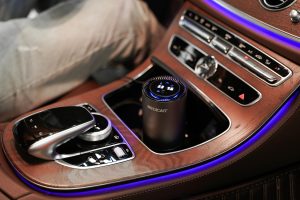Cybersecurity in Connected Cars: Fighting $500M Hacker Threats
The rise of connected cars has brought about a new era of convenience and efficiency in the automotive industry. With advanced features such as real-time navigation, remote diagnostics, and driver assistance, connected cars have revolutionized the driving experience. However, with this convenience comes a serious threat – cybersecurity. As more and more cars become connected to the internet, hackers are finding new ways to exploit vulnerabilities, putting millions of drivers and their vehicles at risk. In fact, it is estimated that cyberattacks on connected cars could cost the industry up to $500 million by 2025. In this article, we will delve into the world of cybersecurity in connected cars and explore the measures being taken to combat the growing hacker threat.
The Growing Hacker Threat
Connected cars rely on complex systems of computers and sensors to function. These systems are connected to external networks, making them vulnerable to cyberattacks. As cars become more technologically advanced, hackers are finding new ways to exploit these systems and gain access to sensitive data. One of the most common types of attacks is remote manipulation of the car’s systems, which can lead to dangerous situations for drivers and passengers. In 2015, a team of researchers demonstrated how they were able to remotely control a Jeep Cherokee, causing it to lose control on the highway. This incident sparked widespread concern about the security of connected cars and their potential for catastrophic cyberattacks.
The Risks of Cyberattacks on Connected Cars
The consequences of a successful cyberattack on a connected car can range from minor inconveniences to life-threatening dangers. Hackers can gain access to a car’s systems and manipulate its functions, including braking, steering, and acceleration. This can lead to accidents or even intentional crashes. Hackers can also steal personal information from the car’s systems, such as location data, driving patterns, and even credit card information. This not only poses a threat to the driver’s privacy but also puts them at risk of identity theft. Furthermore, cyberattacks can also result in financial losses for car manufacturers due to damaged vehicles and reputational damage.
Industry Efforts to Mitigate the Threat
Encryption and Authentication
Automakers are well aware of the severe consequences of cyberattacks on connected cars and are taking steps to mitigate the risks. One of the main strategies being employed is encryption and authentication. Encryption uses complex algorithms to protect the communication between a car’s systems and external networks. Authentication, on the other hand, ensures that only authorized users have access to the car’s systems. This can be achieved through the use of biometric identification or multi-factor authentication.
Over-the-Air Updates
Car manufacturers are also implementing over-the-air (OTA) updates for their vehicles. Just like your smartphone or computer, connected cars can receive software updates remotely. This allows manufacturers to fix vulnerabilities and patch security flaws without requiring drivers to bring their cars to a dealership. In case of a cyberattack, OTA updates can also be used to restore the car’s systems to their original state.
Collaboration with Cybersecurity Experts
Recognizing the need for specialized expertise in cybersecurity, car manufacturers are teaming up with cybersecurity experts to ensure the safety and security of their vehicles. This collaboration involves conducting rigorous testing and risk assessments to identify vulnerabilities and develop solutions to strengthen the car’s systems against potential attacks.
The Future of Cybersecurity in Connected Cars
The threat of cybersecurity in connected cars is constantly evolving, and car manufacturers must continue to stay ahead of the game to protect their customers and their brand reputation. With the rise of autonomous vehicles, the need for ensuring the security and safety of connected cars will become even more critical. As such, manufacturers must continue to invest in advanced security measures and collaborate with experts to stay one step ahead of hackers.
Conclusion
The rapid technological advancements in the automotive industry have brought about immense benefits for drivers, but they also bring along risks in the form of cyberattacks. As the hacker threat continues to grow, car manufacturers must prioritize cybersecurity in their connected cars. By implementing strong encryption and authentication, offering regular OTA updates, and collaborating with cybersecurity experts, manufacturers can mitigate the risks and ensure the safety and security of their customers and their vehicles. With the right measures in place, the future of connected cars can continue to be safe, efficient, and convenient for all.











